
In this episode of CFO Weekly, Apurv Bansal, CEO & Co-founder at Zenskar, joins Megan Weis to explore how modern CFOs are transforming their finance operations by moving from manual spreadsheet-based processes to AI-powered billing and revenue recognition systems. Apurv brings unique insights as a second-time entrepreneur, IIT Delhi and Harvard Business School alumni, who previously co-founded Wishpicker (acquired by Snapdeal) and held leadership roles at Google and Elevation Capital.
With his extensive background in fintech and firsthand experience with complex billing challenges at Google, Apurv shares how finance teams can leverage technology to automate manual processes, implement dynamic pricing models, and build investor-ready financial systems. Currently serving as CEO of Zenskar, Apurv oversees the development of AI-native billing solutions that help companies transition from cost-plus to usage-based pricing models.
Show/Hide Transcript
Megan - 00:50: Today, my guest is Apurv Bansal, co-founder and CEO at Zenskar. He is a second-time entrepreneur and an alumnus of IIT Delhi and Harvard Business School. He previously co-founded Wishpicker, acquired by Snapdeal, held leadership roles in product at Google, and worked in FinTech at Elevation Capital. While at Google, Apurv experienced firsthand the complexities of managing billing and revenue recognition for modern businesses. Existing tools were outdated and ill-equipped to handle intricate pricing models. Recognizing this widespread challenge, Apurv and his co-founder, Saurabh, set out to create a better, scalable way to modernize billing operations, leading to the founding of Zenskar. Apurv, thank you so much for being my guest on today's episode of CFO Weekly.
Apurv - 01:38: Thank you. It's a pleasure to be here.
Megan - 01:39: Today, our discussion centers on the changing world of revenue strategy, and we'll be talking about the evolution of variable pricing and revenue management. I'm really looking forward to this topic and learning about you and from your experiences. So let's jump right in.
Apurv - 01:54: Sure. Let's do it.
Megan - 01:55: Alright. So first, let's go back to the beginning. What sparked your initial interest in finance and led you to pursue a career in this space?
Apurv - 02:03: It was more from problems that I had seen in my previous companies. I also worked at Google before this. At Google, I saw that one of the biggest problems we were struggling with was around billing and revenue recognition, just automating it end-to-end. There was an army of engineers devoted to automating these processes by building in-house tooling and removing manual effort. Technologists felt like there had to be a better way to solve this problem, and that's what drove me to start and build a company that automates manual processes within the finance function of a company. My interest in it was driven more by the lack of technology in the space and the potential for technology to generate value more than anything else.
Megan - 02:52: And let's quickly talk about Zenskar. So what is Zenskar? What do you guys do, and who do you do it for?
Apurv - 02:59: So Zenskar is a B2B software business. We essentially automate manual operations within the finance function of a business. For example, the process of billing, generating invoices, recognizing revenue, and financial reporting. All of these processes, as you know, in a lot of companies, still happen manually on spreadsheets with humans doing manual tasks that need not be done by humans. Machines can do them, but there just seemed to be a lack of tooling in the space that would seamlessly automate these operations while ensuring it is done accurately. You can't misreport revenue, or you'll fail audits. You can't send wrong invoices to your customers; that causes churn. So accuracy was the missing piece of the puzzle with other vendors, and that's how we saw a gap in the market and started to automate these financial operations. We mostly cater to companies that offer subscription, usage, or more custom pricing models. Salespeople typically sell creative deals to customers, and finance teams are left to figure out how to take those sales contracts and convert them into invoices and revenue. That's where Zenskar comes in.
Megan - 04:12: Is it a tool that just plugs into an ERP? How does it work?
Apurv - 04:15: We sit in between your tech stack. We plug into your ERP, your CRM, your payment stack, and your internal sources of data. So let's say there's a data warehouse you use or some other internal database that houses the consumption data. We can plug into all of these systems and act as your central nervous system for the finance function.
Megan - 04:39: In today's fast-changing business landscape, CFOs are expected to go beyond just managing financials. In your experience working with CFOs, how do you see their role evolving into a key driver of innovation and growth?
Apurv - 04:56: A CFO's role is not meant to be just to drive financials. CFOs have to drive strategy and bring a financial lens to driving that strategy. A lot of other teams and businesses don't keep the company's financials in mind. It is a CFO's job to make sure that any strategy, whether it is your sales, marketing, customer success, or even your product strategy, is robust enough from a financial point of view. The CFO needs to work with all of these different departments, build good relationships with them, understand what their priorities are, understand what they're trying to accomplish, and make sure that the CFO can add value and ensure that the strategy is signed off by them. They also need to make changes to ensure that the cash flow position of the company, the profitability of the company, or whatever other metrics matter, depending on the state of the business, are kept front and center while figuring out the strategy. If you're a CFO today and you're not doing that, you're not adding as much value as you're supposed to be adding to your company.
Megan - 06:05: For a CFO out there listening right now, how might they know that they need Zenskar? What are some key signs?
Apurv - 06:13: Some key signs are if every month, you're spending 15 to 20 days across two or three people on your team manually generating invoices and sending them to your customers. Or your team is wrangling with dozens of spreadsheets that have hundreds of tabs, and each tab has thousands of rows of revenue schedules. You're applying a lot of formulas to make sure you create your journal entries, create your financial reports, and push them into your ERP. Or you may realize that you're in a company where some tooling was put in place years ago to automate billing and revenue recognition, but the way your company prices its products and sales levers has changed. They've become more complex, and the tooling built years ago has just not kept pace with those changes. Despite having tooling to automate these operations, you're still spending a lot of manual effort because you're not able to use the current tooling you have to send out invoices on the first day of the month for the previous month or generate your journal entries and close your books today as opposed to taking a full week. That's where you need someone like Zenskar.
Megan - 07:27: As businesses face growing competition, pricing flexibility is becoming increasingly important. Why is it crucial for companies to have dynamic pricing models today?
Apurv - 07:38: The main reason is just to make sure that you're doing right by your customer. At the end of the day, it's easiest to sell to a customer if your pricing model correlates to how they see value from the product as opposed to what it means for you from a cost perspective. A simple example, let's say today I use HubSpot. HubSpot charges me X dollars a month, which they charge to five other businesses. Depending on my sales motion or what data I've stored, I may or may not see as much value from it as somebody else who's paying the same price. If they had a way to price the product based on, I don't know, the number of opportunities in my CRM, I would be more amenable to paying for it based on how I see value from the tool. For a support tool, instead of charging per seat, they could charge per ticket that was closed or per successful resolution. To make sure your product is pricing itself based on the value that your customers see from it, you have to further break it down and classify how customers see value from your product. Maybe I have different customer segments who may see value differently from my product. Now, for each segment of customers that I'm going to make the sale, my pitch has to be different because they all see value from me very, very differently. Value levers are different. My pricing model is different for every customer. Sometimes, you'll run up against a customer who's just a very good negotiator, and then your salesperson has to add these terms for contracts that make sure you can close the deal while generating a profit for the business. All these levers, when they come into play, make your pricing pretty variable and pretty dynamic. If you're not offering that dynamic pricing, you will just lose revenue. So every business needs to make sure they're well-equipped to offer these pricing models today.
Megan - 09:39: Let's dig into this for a second. How does aligning the pricing with customer usage improve the value perception to that customer and create sustainable growth in the long term?
Apurv - 09:50: One of the segments this customer caters to is telemedicine. Let's say a hospital can now use this company's product to offer telemedicine or video medicine to their patients. Now you're able to unlock and serve more patients, thereby adding more revenue for the hospital. When the hospital is paying for this video tool, the way they look at value is how many more patients they were able to serve through this tool, not the number of video minutes they streamed, which is what the cost lever for this tool is. So initially, they used to price based on the number of minutes, and the hospital in this case would just be like, "I don't want to pay you based on the number of minutes because what matters to me is how many new patients I was able to serve through your tool." The day they changed their pricing to make it more related to the number of patients, they were able to close more deals because customers saw more value in terms of the number of patients and were more aligned to paying for the tool based on how they see value. That's one example of how you can price based on value, which helps build long-term customer success and ensures retention and, of course, upsells as well.
Megan - 11:05: What are some of the most common challenges that you see companies face when they're transitioning to a usage-based pricing model versus this historical cost-plus model?
Apurv - 11:16: There's a bunch of challenges. If I had to pick out the main ones, one is that you need to drive alignment across multiple stakeholders to even figure out what this new pricing model should look like. The CEO can't just say, "Hey, let's move from a per-seat model to a usage-based model." You have to first talk to your sales teams and get their point of view on how this would affect sales, and how this would increase or reduce friction in the process. You have to talk to your product team to see if they even have a way to measure usage. You have to first figure out what usage you need to track and what part of your product, or what metric of your product, your customers will see value from. Based on that, you measure that metric as usage. Your product team needs to have a way to track that usage. You have to talk to your finance team and see if you have the ability to recognize revenue based on usage as opposed to just based on subscription. Finance teams can do it, by the way. You already have spreadsheets as your friend, so that doesn't become a bottleneck. The point I'm making is every team in the company has to come together because everybody gets impacted by the shift in pricing. Once you put everything together, it means different things for different parts of the business. For the finance function, it just means that your billing becomes a lot more complex. Your revenue recognition becomes a lot more complex because now the information needed to generate bills and recognize revenue no longer lives only in the sales contract. The sales contract will just say, "Hey, it's $100 per unit of usage," but the amount of usage is not in the sales contract. That is living somewhere in the product database. As a finance team, you have to go extract that information. You have to marry all this together to then generate invoices and recognize revenue. That becomes a lot more complex, and that's what brings in the necessity for someone like us to help drive efficiency and automation in that process.
Megan - 13:17: In the venture capital and fundraising world, investors often prioritize strong financial systems. First of all, why do investors care so much about companies' finance systems?
Apurv - 13:27: Because investors' decision-making depends on the finances reported by the company. The accuracy, timeliness, and auditability of the finances reported by the company all boil down to how robust your financial stack is. Fun fact: I used to be a VC six years ago, and we had this company where we were about to invest. We had made up our minds to invest based on the data that was shared with us. Then as part of the due diligence process, as we went deeper and sat down with the finance team, they weren't lying to us. It's not like they were trying to hide any information. They just could not prove that the data was correct. They did not have any systems in place that they could legitimately put together and tell us with confidence that the data they sent us as part of the evaluation process was correct. That just made us lose all trust in that company's data because we were like, "Hey, these guys don't have their financial systems in place." And the deal fell off; we did not invest. So, again, just a small example, but your house has to be in order for you to be able to raise money.
Megan - 14:42: I'm sure if you can't get revenue right, there's probably little faith that you've gotten anything else right.
Apurv - 14:46: Exactly.
Megan - 14:46: And when it comes to billing and revenue recognition, companies need clear metrics to measure success. What are the key metrics that CFOs should use to evaluate the performance of their billing systems?
Apurv - 15:00: A few metrics. One is time to send an invoice. If you're on a monthly cadence, are you able to send your invoices for January on February 1st, or do you need time until February 10th? Because the longer you delay it, the later you collect cash and cash flows get delayed. So time to invoice is one. The accuracy of invoices is number two. If you send wrong invoices to your customers, if you're over-invoicing, they will lose faith in you and they will churn. If you are under-invoicing, they will never tell you, and you are just losing revenue. So the accuracy of billing is the second metric. The cost of billing would be man-hours and tooling cost. How efficient is that? Are you spending way too much on man-hours and what's the opportunity cost as well? If I hire somebody in the finance team, and now they're spending 10 days a month generating invoices, those are 10 days that they could have worked on budgeting, forecasting, and strategy. So there's opportunity cost as well. Those are the few key metrics I look at when we're looking at a business's billing efficiency.
Megan - 16:10: No conversation would be complete these days without discussing AI. I'm just curious, as AI becomes more prevalent, how are you incorporating it into your tool at Zenskar?
Apurv - 16:24: Every business needs to incorporate AI into their stack today. If you're not incorporating AI today, forget incorporating, you have to be an AI-first company. If you're not doing that as a business, it's only a matter of time before you die. We're doing the same. So it starts with some of the basics, like all of your tools that help our engineers write code faster and more smartly. Our entire tech stack is AI-native. That's more on the back burner, so our customers won't directly interact with those AI features. But if I were to look at the customer-facing aspects of it, in other billing tools, you have a sales contract, and you have to manually go in and put every detail from the contract into the billing tool. With Zenskar, we have a feature where you just upload the PDF. The AI will read all the terms in the contract and generate the invoices and revenue entries for that contract based on what you put into the system. In other revenue tools, to know the key metrics for your business, like what's my revenue, or what's my churn, you have to run reports manually. With Zenskar, we have an AI feature where you could just ask our AI, "Hey, what was my revenue last month?" or "What was my churn for this cohort of customers?" and the AI will give you the answers. So, we already have a bunch of AI-first features and are actively building out anything and everything that adds value for our customers while keeping AI at the front and center.
Megan - 18:02: Many companies initially rely on in-house billing systems, but these solutions often become temporary, clunky, and resource-draining.
Apurv - 18:25: Well, I won't say Google didn't get it right. I'd say the number of engineers working on that was not something that made sense. It felt like those engineers could be shipping more products for Google and getting more revenue. Homegrown systems are typically built when a business is trying to move away from spreadsheets, and they end up being built by engineers who are not financial experts. That engineer may not know the difference between accrued revenue and deferred revenue. That engineer may not know the exact correlation between prepaid versus postpaid billing and how that impacts cash flows. They may be great at technology but may or may not be the best at understanding financial jargon. At any company, typically, when an engineer builds a billing system, they build it in a more reactive manner. They ask, "Okay, what is my pricing model today? What is being done manually today? How can I automate it?" All of that is done reactively as opposed to figuring out, "Okay, what could my pricing look like five years from today, and how do I build this more proactively in a future-proof manner?" What I have seen is at most companies, when an engineering manager allocates tasks, building out billing is not given to your best engineers. Your best engineers are put on customer-facing product features. For all these reasons, homegrown billing systems do their job for the first 6, 8, or 12 months after they're built. But after that, as a company's business model evolves, you'll launch new products and new pricing models. These systems are not updated as frequently or are not even as easy to update because the fundamental architecture behind a homegrown system is not meant to be future-proof. As a result, you throw more engineers at upgrading it. You throw more engineers at maintaining the system. You thought this was a one-time activity. "I'll build this out today and be set for the next five years," but you realize that you have to invest more engineering resources in the in-house billing system every subsequent year. Then you give in to the sunk cost fallacy that you've already been building this for the last four years, so you may build more of it in the fifth year. That is how these problems compound, and that's what we have been seeing with all of our customers who have been switching from in-house billing systems to Zenskar.
Megan - 20:54: So how can they prevent this from happening, and how can they prevent themselves from investing too much money and maybe making the switch sooner or maybe not investing at all and starting off with a tool like this?
Apurv - 21:07: There are only two ways. Either you build an in-house billing system that is future-proof, which is not very easy because that seems unlikely. The other option is that at some point, you realize you may decide today that, "Okay, if today I don't need a third-party billing system, I could hack together a few scripts and put something together in-house." But in that case, you then have to be very cognizant of, "Okay, I built this last year. Is this enough?" or "In the next year, am I still having to invest more engineering resources and upgrade this tool?" because now my cost to maintain this tool is increasing. Despite upgrading the tool, is this delivering 100% automation for my finance team or is it still only 50% automation? You have to be very, very conscious not to give in to the sunk cost fallacy. You may have decided to build a billing system and you will use it for two years. But in year three, if you feel like, "Hey, this is now blowing up," you need to pull the plug and invest in a more future-proof system. The best case, of course, is on day one, you realize that you need to be future-proof and you invest in a more future-proof system. But not everybody makes decisions keeping five years from today in mind, so that I've seen less often.
Megan - 22:23: So how has Zenskar's approach to modern billing solutions helped businesses overcome these challenges? Do you have a favorite example?
Apurv - 22:33: Yeah, I have quite a few. Before we even wrote the first line of code at Zenskar, my co-founder and I spoke for a six-month period with about 500 product, finance, engineering, and leadership teams at small, medium, and enterprise companies to try and understand the extent of the problem and how people were solving it before we laid down the architecture for Zenskar. We have an innovative system design and architecture to build a more future-proof, very flexible system. There is one customer of ours that sells surveys. They essentially had a postpaid model where they would collect cash later. The reason they were not moving to a prepaid model was because they did not have the ability to bill on a prepaid basis. When they implemented Zenskar, we enabled them to move from a postpaid model to a prepaid model, which meant that cash comes up front. Their cash flow increases, and they get better-quality customers without spending any additional manual effort. That only became possible because of the architecture we put in place. We had another customer who wanted to offer five different types of pricing models to five different segments of customers, and they just could not do it with their homegrown system. Within three weeks of going live with us, they were able to roll out these different pricing models to different segments of customers, and they're just helping them close more and more customers as they're pricing their offerings better.
Megan - 24:06: That's amazing. Last question. As you look into the future, what is it that keeps you up at night?
Apurv - 24:14: It's a good question. What keeps me up at night, honestly, is not knowing what I don't know about how AI is going to change the world and, accordingly, our business. We've kept our tech stack AI-native from day one. You don't know what you don't know. The pace at which the world is changing is dramatic. I'm just cognizant of some new way this problem can be solved that would solve it even better than we do for our customers and grab market share away from us. That, to me, is what keeps me up at night.
Megan - 24:56: Yeah, it's hard to imagine where we're going to be in even as little as three years from now.
Apurv - 25:01: Exactly.
Megan - 25:01: Apurv, thank you so much for being my guest today.
Apurv - 25:06: Thank you for having me. I really enjoyed this chat, Megan.
Megan - 25:08: I've really enjoyed it as well, and I wish you and Zenskar all the best. To our listeners, please tune in next week, and until then, take care.
What You'll Learn:
-
Why dynamic pricing models are crucial for competitive advantage in today's market
-
How to align pricing with customer value perception for sustainable growth
-
The role of AI in automating billing and revenue recognition processes
-
Key metrics CFOs should track to evaluate billing system performance
-
Strategies for transitioning from homegrown billing systems to scalable solutions
-
How robust financial systems impact investor confidence and fundraising success
Key Takeaways:
AI-Powered Systems That Empower Finance Transformation
Modern CFOs are recognizing that manual finance processes represent a significant opportunity for technological automation. The lack of sophisticated tooling in finance operations creates competitive advantages for companies that embrace AI-native solutions.
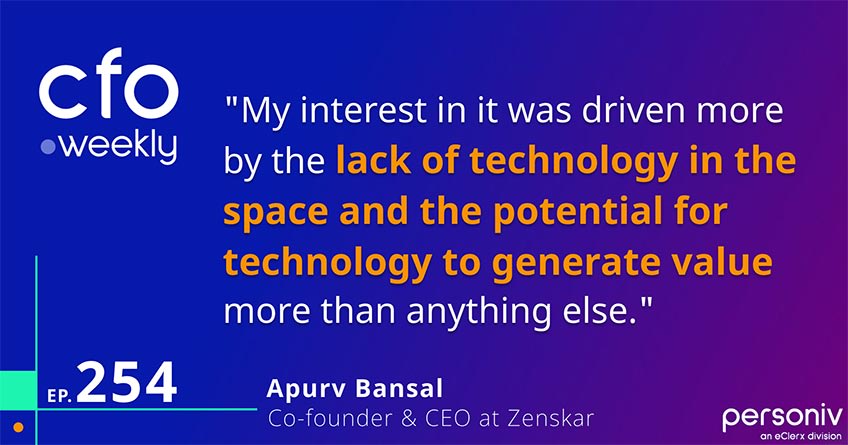
"My interest in it was driven more by the lack of technology in the space and the potential for technology to generate value more than anything else." Bansal commented. - 00:02:03 - 00:02:52
CFOs as Strategic Partners
Today's CFOs must evolve beyond traditional financial management to become strategic partners across all departments. Success requires bringing financial perspective to sales, marketing, customer success, and product strategies while maintaining focus on cash flow and profitability.
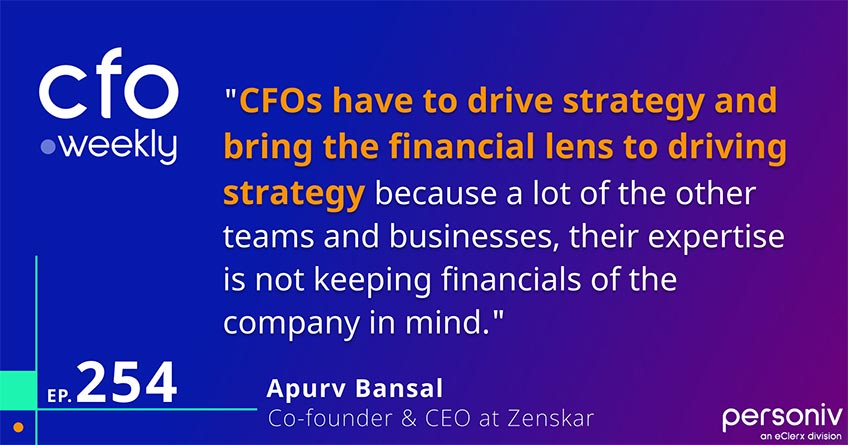
"CFOs have to drive strategy and bring the financial lens to driving strategy because a lot of the other teams and businesses, their expertise is not keeping financials of the company in mind." Bansal explained. - 00:04:56 - 00:06:05
Value-Based Pricing Revolution
Companies are shifting from cost-plus pricing to value-based models that align with customer usage patterns. This transformation requires dynamic pricing capabilities that correlate with how customers perceive value, leading to improved retention and sustainable growth.
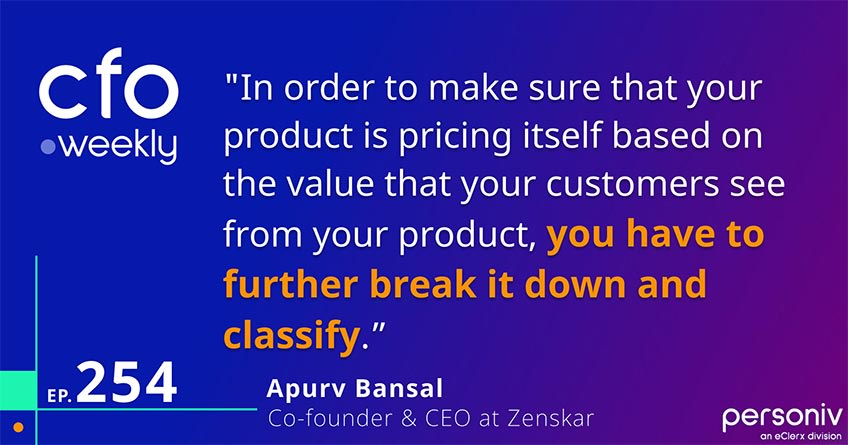
"In order to make sure that your product is pricing itself based on the value that your customers see from your product, you have to further break it down and classify.” Bansal emphasized. - 00:07:38 - 00:09:39
Investor-Ready Financial Systems
Robust financial systems are critical for fundraising success. Investors prioritize companies with accurate, timely, and auditable financial reporting capabilities, as weak financial infrastructure can derail investment opportunities regardless of business performance.
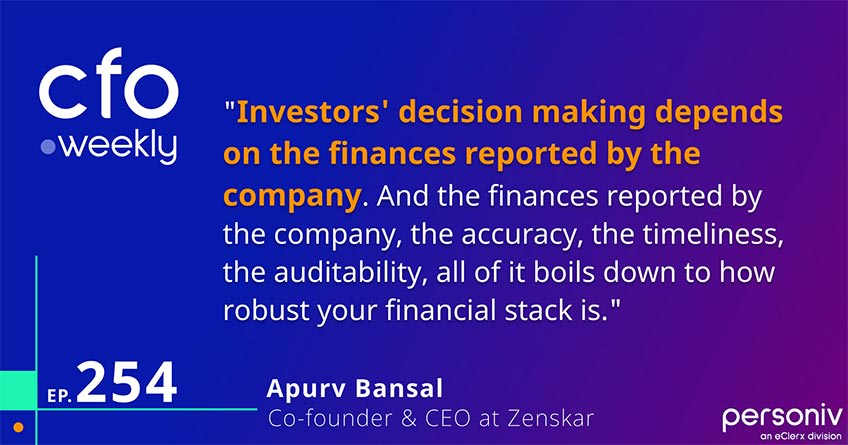
"Investors' decision making depends on the finances reported by the company. And the finances reported by the company, the accuracy, the timeliness, the auditability, all of it boils down to how robust your financial stack is." Bansal highlighted. - 00:13:27 - 00:14:42
AI-Powered Billing Systems for CFOs
Leading companies are implementing AI-native financial systems that automate contract processing, revenue recognition, and financial reporting. These solutions enable finance teams to focus on strategic initiatives rather than manual data processing.
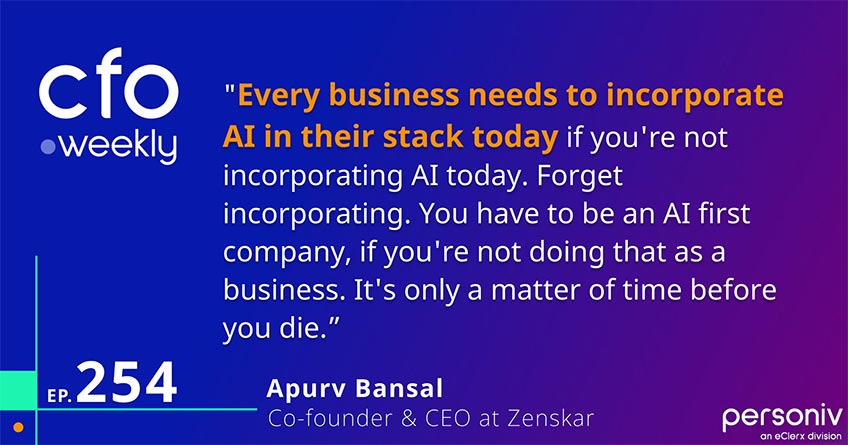
As Bansal put it, "Every business needs to incorporate AI in their stack today if you're not incorporating AI today. Forget incorporating. You have to be an AI first company, if you're not doing that as a business. It's only a matter of time before you die.” - 00:16:24 - 00:18:02
Ready to revolutionize your financial operations? We provide expert solutions to help CFOs leverage modern tools for sustainable growth. Contact us today to learn more.





















